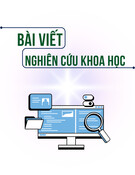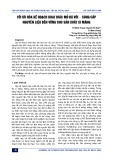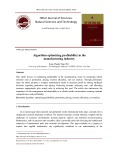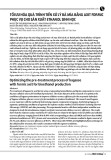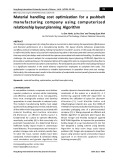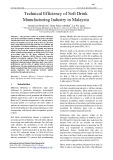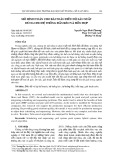
* Corresponding author.
E-mail address: sp_anbu@cb.amrita.edu (S.P.Anbuudayasankar)
© 2019 by the authors; licensee Growing Science, Canada.
doi: 10.5267/j.dsl.2018.5.002
Decision Science Letters 8 (2019) 65–80
Contents lists available at GrowingScience
Decision Science Letters
homepage: www.GrowingScience.com/dsl
GRAHP TOP model for supplier selection in Supply Chain: A hybrid MCDM approach
Venkata Krishnarao Kogantia, Nagaraju Menikondab, S. P. Anbuudayasankarc*, T. Krishnarajc,
Rajesh Kumar Athhukurid and Mokkapati Sai Vastave
aThe University of Texas, Dallas, USA
bHochschule Stralsund University of Applied Sciences, Germany
cAmrita School of Engineering,Amrita Vishwa Vidhyapeetham, India
dInfosys Limited, India
eHAN University of Applied Sciences, Netherlands
C H R O N I C L E A B S T R A C T
Article history:
Received November 18, 2017
Received in revised format:
April 28, 2018
Accepted May 4, 2018
Available online
May 5, 2018
Decision makers of various disciplines are facing challenges because of vast availability of
options in the real world. Even though each and every decision made by a decision maker is
being done with a great knowledge and conscience, the decision maker needs suitable support to
choose the most favorable option to acquire great results in an agile environment. Supplier
selection is imperative for an efficient supply chain management. Many industries are in need of
effective decision making tools which aids them in valuable supplier selection. This paper
proposes a model using Multi Criteria Decision Making (MCDM) tools viz., Grey Relational
Analysis (GRA), Analytical Hierarchy Process (AHP) and Technique for Order Performance by
Similarity to Ideal Solution (TOPSIS). GRA is used to shortlist the criteria from the available
options, while AHP is used to assign weights to the criteria. The final supplier in the selection
process is obtained using TOPSIS. The proposed GRA-AHP-TOPSIS model (GRAHP TOP) is
used to analyze and formulate the important criteria and the applicability of the model is tested
on a case of a small scale industry located in South India.
.by the authors; licensee Growing Science, Canada 9201©
Keywords:
AHP
GRA
MCDM
Supplier selection
TOPSIS
1. Introduction
Multi-criteria decision making (MCDM) techniques are used where there are several conflicting criteria
through which a decision has to be made. MCDM works with prioritizing, organizing and solving
problems involving multiple criteria. It aids the decision makers and gives a better understanding of the
problem. These tools take into account of the opinion of various decision makers and gives importance
to each decision maker’s opinion. The abstract of the optimal solution is being replaced by a non-
dominated set of solutions and it makes decision maker to choose from these set of solutions. However,
the solutions to a set of non-dominated criterions are too large to be evaluated by the decision makers
to conclude to a solution. Hence, we need different tools to address the issue of problems with multiple
attributes. Several tools have been used to address multi criteria problems over a period of time. So it
needs significant amount of time to investigate on the tools which can provide better solutions for a
variety of such problems. So hybridization of the tools may be used to utilize the expertise of an array

66
of tools. Supplier selection is one of the key processes in supply chain in which the heads of the firm
select the best suppliers from all the available sources. Since the process plays an important role in
determining the accomplishment of the system there should be a specific scientific process to select a
supplier, rather than mere brainstorming and taking a decision. Though there are plenty of researches
carried out in the supplier selection and there are several hybridization of tools (Prasad et al., 2017).
Recently there is an increase in the usage of hybrid MCDM (HMCDM) to assist the decision maker.
The primary reason is the credence in the results obtained when more than one method is combined to
solve multiple criteria problem. HMCDM can address challenging problems involving diverse and
complex information. In this paper an attempt has been made to develop a HMCDM combining Grey
Relation Analysis (GRA), Analytical Hierarchy Process (AHP) and Technique for Order of Preference
by Similarity to Ideal Solution (TOPSIS).
2. Literature review
Conventional decision-making methods are used to ameliorate overall sustainability and create efficient
organizations. During the past few years, there is a rapid increase in works aggregating sustainability
by using variety of MCDM. Huge amount of literature encapsulating these techniques have been
reported. The importance and usefulness of MCDM in supplier selection can be seen by the number of
papers on literature review alone. To quote some important review papers are Agarwal et al. (2011);
Govindan et al. (2015); Chai et al. (2013); Govindan and Jepsen. (2016); Ho et al. (2010); Mardani et
al. (2015a); Mardani et al. (2015b); Zare et al. (2016); Zavadskas et al. (2016); Renganath and Suresh,
(2016).
Table 1
Literature on criteria for supplier selection
Criteria Questionna
ire Code
Reference
Commitment to Delivery
Schedule
Q1 Galankashi et al., 2016; Deng et al., 2014; Polat & Eray, 2015; Lima-junior &
Carpinetti, 2016; Adalı et al., 2016
Willingness of Supplier to
Continuously Improve Quality
Q2 Rezaei et al., 2014; Lima-junior & Carpinetti, 2016; Gupta & Barua, 2017;
Azimifard et al., 2018
Post Sale Service by Supplier Q3 Wan & Beil, 2009; Shemshadi et al., 2011
The Sample Quality Checking
Report
Q4 Rezaei et al., 2014; Deng et al., 2014; Polat & Eray, 2015; Lima-junior & Carpinetti,
2016; Singh et al., 2018
Financial Stability of the
Supplier
Q5 Rezaei et al., 2014; Junior et al., 2014; Büyüközkan & Çifçi, 2012; Mwikali &
Kavale, 2012
An ISO 9000 Certified
Supplier
Q6 Rouyendegh & Saputro, 2014; Akman, 2015; Shemshadi et al., 2011; Mwikali &
Kavale, 2012
Past Supply Record Q7 Deng et al., 2014; Peng, 2012; Rouyendegh & Saputro, 2014; Büyüközkan & Çifçi,
2012; Mwikali & Kavale, 2012; Hamdan & Cheaitou, 2017
Supply Capacity of Supplier Q8 Rezaei et al., 2014; Deng et al., 2014; Polat & Eray, 2015; Lima-junior & Carpinetti,
2016; Banaeian et al., 2018
Packing Done to The Raw
Material by The Supplier
Q9 Büyüközkan & Çifçi, 2012; Awasthi & Kannan, 2016; Petrudi et al., 2017
Geographical Position of the
Supplier
Q10 Rouyendegh & Saputro., 2014; Büyüközkan & Çifçi, 2012; Awasthi & Kannan,
2016
Authorized Suppliers for the
Material
Q11 Rezaei et al., 2014; Deng et al., 2014; Polat & Eray, 2015; Lima-junior & Carpinetti,
2016
Reference of Customers Q12 Rouyendegh & Saputro, 2014; Akman, 2015; Shemshadi et al., 2011; Mwikali &
Kavale., 2012
Supplier selection is one of the standards and, is extremely researched area in procuring and
subcontracting. In fact, analyses of literature in vendor selection specify a strong diversity in the
universal approaches for selection (Ho et al., 2010) and as well as in the assessment of criteria (Weber
et al., 1991).There are many criteria which affect the supplier selection. Busch (1962) and Dickson
(1966) institute that criteria similar to quality, assurances and delivery schedule are vital assessment
factors among many others like administration capability, value, manufacturing capability, monetary

V. K. Koganti et al. / Decision Science Letters 8 (2019)
67
position, labor associations, vendor standing, technical competence, post sales services and numerous
other relationship explicit qualities like reciprocal provisions and past business chronicles. The
effectiveness of the supplier selection depends on the preciseness of the criteria to be considered in the
process. Numerous literatures have been analyzed and a survey has been prepared with the criteria that
are considered as prominent ones. This survey was filled by experts from ten different firms. Table 1
shows the criteria that were considered in the questionnaire with which a survey is taken from 10
industries in South India. The criteria that are selected through literature review are used in different
scenarios by the above mentioned authors. They are systematically presented in Table 2.
Table 2
Literature on the scenario of criteria used for supplier selection
Criteria Scenario Reference
Commitment to delivery schedule
Supplier selection with incomplete and imprecise information Deng et al., 2014
Subcontractors in railway industry Polat & Eray,2015
Supplier selection in automobile industry Galankashi et al., 2016
Supplier selection in automobile supply chain Lima-junior & Carpinetti, 2016
Willingness of supplier to
continuously improve quality
Supplier selection in airline retail industry Rezaei et al., 2014
Supplier selection in automobile supply chain Lima-junior & Carpinetti, 2016
Green supplier selection Gupta & Barua.,2017
Supplier selection in steel industry Azimifard et al., 2018
Post sales service by supplier Supplier selection in Contracting Wan & Beil, 2009
Supplier selection in petro chemical Industry Shemshadi et al., 2011
The sample quality checking report
Supplier in airline retail industry Rezaei et al., 2014
Supplier selection with incomplete and imprecise information Deng et al., 2014
Subcontractors selection in railway industry Polat & Eray, 2015
Supplier selection in automobile supply chain Lima-junior & Carpinetti, 2016
Financial stability of the supplier
Supplier selection in procurement Mwikali & Kavale, 2012
Supplier selection in automotive industry Junior et al., 2014
Supplier selection in airline retail industry Rezaei et al., 2014
Green supplier selection Büyüközkan & Çifçi, 2012
An ISO 9000 certified supplier
Supplier selection in automobile industry Akman, 2015
Supplier selection in petro chemical industry Shemshadi et al., 2011
Supplier selection in procurement Mwikali & Kavale, 2012
Supplier selection in fertilizer industry Rouyendegh & Saputro, 2014
Past supply record
Supplier selection in logistics industry Peng, 2012
Supplier selection in procurement Mwikali & Kavale, 2012
Supplier selection in fertilizer industry Rouyendegh & Saputro, 2014
Supplier selection with incomplete and imprecise information Deng et al., 2014
Green supplier selection Büyüközkan & Çifçi, 2012
Green supplier selection Hamdan & Cheaitou, 2017
Supply capacity of supplier
Supplier selection in airline retail industry Rezaei et al., 2014
Supplier selection with incomplete and imprecise information Deng et al., 2014
Subcontractor selection in railway industry Polat & Eray, 2015
Supplier selection in automobile supply chain Lima-junior & Carpinetti, 2016
Supplier selection in agro-food industry Banaeian et al., 2018
Packing done to the raw material
by the supplier
Green supplier selection Büyüközkan & Çifçi, 2012
Green supplier selection Awasthi & Kannan, 2016
Geographical position of the
supplier
Supplier selection in fertilizer industry Rouyendegh & Saputro, 2014
Green supplier selection Büyüközkan & Çifçi, 2012
Green supplier selection Awasthi & Kannan, 2016
Authorized suppliers for the
material
Supplier selection in airline retail industry Rezaei et al., 2014
Supplier selection with incomplete and imprecise information Deng et al., 2014
Subcontractor selection in construction industry Polat and Eray, 2015
Supplier selection in automobile supply chain Lima-junior & Carpinetti, 2016
Reference of customers
Supplier selection in fertilizer industry Rouyendegh & Saputro, 2014
Supplier selection in automobile industry Akman, 2015
Supplier selection in petro chemical industry Shemshadi et al., 2011
Supplier selection in procurement Mwikali & Kavale, 2012

68
3. GRA – AHP – TOPSIS (GRAHP TOP)
Hybrid tool combination: (GRAHP TOP)
GRA AHP TOPSIS
Grey Relation Analysis (GRA) is used to find the Grey Relation Grades and is used to reduce the
uncertainty of the results and to prioritize the criteria that are considered. Short listing of criteria and a
pair wise comparison matrix has been formed using Analytical Hierarchy Process (AHP). Weights for
the criteria are obtained from AHP and these weights are further used in TOPSIS to find out the best
alternative from among all the alternatives available.
The proposed methodology consists of fifteen steps
Step 1: Identification of important criteria for selection using a survey
Step 2: Collection of the results for the calculation of the difference between sequences and reference
sequence
Step 3: Calculation of the grey relational coefficient
Step 4: Calculation of the grey relational grades
Step 5: Formulation of the aim of the work
Step 5: Evaluation of the criteria for selection of the alternatives
Step 6: Pair wise comparison using Saaty nine-point scale
Step 7: Computation of relative criteria weights
Step 8: Determination of consistency ratio
Step 9: Formulation of the decision matrix
Step 10: Calculation of the Standard Decision Matrix
Step 11: Construction of the Weighted Standard Matrix
Step 12: Determination of the ideal solution and the negative ideal solution
Step 13: Determination of the separation from the ideal solution Si*
Step 14: Determination of the separation from the negative ideal solution Si’
Step 15: Determination of the comparative closeness to the ideal solution to declare the best alternative
Generally, the data that is collected from survey will be uncertain like the uncertainties in subjective
judgments. People are not sure while making subjective decisions. In some cases information pertaining
to some attributes may not be available at all. Hence an uncertainty caused due to lack of data is a
common problem faced by a decision maker. So this incomplete information would give a vague output.
In order to avoid this and reduce the uncertainty in the survey values, GRA is used. GRA reduces the
fuzziness in the data and gives the output as Grey Relational Grades. Hence pre-processing of the data
is done to get the optimized output.
AHP has been the decision making methodology which is helpful in making judgments by breaking
down a complicated and complex problem into a multi-level hierarchy structure. It is one of the simplest
and powerful methodologies used to address MCDM problems (Mohanavelu et al., 2017). AHP method
is one of the best methodologies to prioritize various selection criteria. The AHP method is useful in

V. K. Koganti et al.
/ Decision Science Letters 8 (2019)
69
determining weights of the criteria and to find the consistency ratio which is used for examination of
the degree of consistency for the pair wise comparison (Saaty, 1980)
TOPSIS methodology is an MCDM system which enables the decision makers to establish the problem
in a simplified way, and carry out analysis. Also it helps in comparing and determining ranks of the
alternatives of actual problems (Hwang & Yoon, 1981). The rankings of the alternatives are obtained
by perceiving shortest distance from the ideal solution and the utmost distance from the negative ideal
solution. Cheng et al. (2002) report TOPSIS as the usefulness based methodology as it does the
comparison of each and every alternative directly depending on the available information that is
available in the evaluation matrices and weights. Also TOPSIS is one of the techniques that have
answered numerous real world glitches. TOPSIS is useful in attaining final ranking of supplier selection
criteria. Fig.1 summarizes the hybrid tool combination.
Fig. 1. Methodology - Hybrid tool combination - GRAHP TOP
4. Case study
A valve manufacturing industry is considered for the case study to validate the GRAHP TOP. The
company receives many outsourcing orders from medium and large scale industries. The design is
provided by an outsourcing company and manufactures the product from scratch i.e., procurement of
raw materials, manufacturing, quality checking and delivery of the product. Therefore, the company

